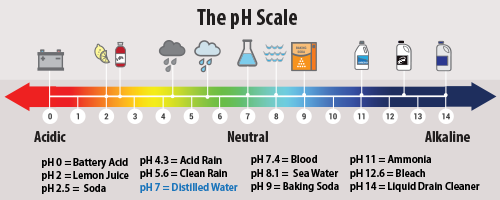A pH test for concrete is very important prior to coating. Concrete tends to have high levels of both moisture and alkalinity compared to other building materials. Therefore, the concrete substrate must be tested to determine if it is stable enough to be coated.
What are pH Levels?
pH levels measure the acidity or alkalinity of water soluble substances (pH stands for ‘potential of Hydrogen’). A pH value is a number from 1 to 14, with 7 as the middle (neutral) point. For example, values below 7 indicate acidity which increases as the number decreases, 1 being the most acidic (think battery acid). Additionally, values above 7 indicate alkalinity which increases as the number increases, 14 being the most alkaline (think liquid drain cleaner).
Now, back to pH levels in concrete…
Many factors can affect the pH levels of the concrete surface, including:
- Content of the Portland cement mix.
- Moisture levels. Higher moisture levels tend to have a higher surface pH.
- Area tested. The pH across different areas of cured concrete can vary.
- Age of concrete. pH is highest on the concrete surface shortly after it has been placed and decreases over time as the surface carbonates.
Testing methods: You can use pH pens, pencils or stripes to test for pH levels. Refer to the technical data page of the product you will be using to determine if the product is acceptable for the pH level of the concrete.
pH Test For Concrete: Recap
Proper preparation prevents poor performance. Therefore, always test the pH level of concrete prior to coating. Especially when coating new concrete. Additionally, there are multiple methods to test pH levels. Try a few and choose the method that works for you.
So Amigos, what’s your go to test for concrete? Share below…
Also, check out Paint Amigo’s pH test kit recommendation below (Amazon affiliate links)…
No products found.
P.S. Download my free eBook The Profitable Painter. Click here.





